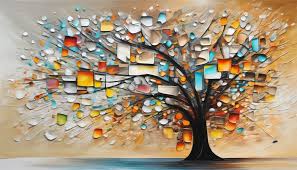Painting, one of the most ancient and revered art forms, schilderij transcends mere technique and material to become a profound expression of the human experience. From the earliest cave paintings to the avant-garde movements of the 20th century, painting has continually evolved, reflecting the complexity of human thought and emotion. This article explores the multifaceted nature of painting, its historical evolution, and its impact on culture and individual expression.
The Origins of Painting
The earliest known paintings, discovered in the Chauvet Cave in France, date back over 30,000 years. These primordial artworks, created with mineral pigments and animal fat, depict hunting scenes and animals, offering a glimpse into the lives and beliefs of early humans. These ancient images were not mere decoration but a way to communicate and perhaps even influence the world around them.
The Evolution Through Ages
1. Classical Period:
In ancient Greece and Rome, painting was an integral part of daily life and ceremonial practice. Greek frescoes and Roman mosaics depicted mythological scenes, historical events, and everyday life, reflecting the values and aesthetics of their societies. The focus was on realism and idealism, with a significant emphasis on proportion and perspective.
2. The Renaissance:
The Renaissance marked a turning point in the history of painting, characterized by a revival of classical techniques and an emphasis on humanism. Artists like Leonardo da Vinci, Michelangelo, and Raphael pushed the boundaries of artistic expression with innovations in perspective, anatomy, and composition. Their work celebrated the potential of human achievement and explored the depths of human emotion.
3. The Baroque and Rococo Periods:
The Baroque era, with its dramatic use of light and shadow, conveyed intense emotion and grandeur. Artists like Caravaggio and Rembrandt employed chiaroscuro to enhance the narrative quality of their paintings. The Rococo period followed, with its playful and ornate style, focusing on themes of romance and leisure.
4. The Modern Era:
The 19th and 20th centuries witnessed a radical transformation in painting. Impressionism, with artists like Monet and Van Gogh, broke away from traditional techniques, emphasizing the effects of light and color. Abstract art, as seen in the works of Kandinsky and Pollock, challenged conventional representations and sought to express the inner workings of the mind.
The Mediums and Techniques
Painting encompasses a diverse array of mediums and techniques. Traditional oils, which offer rich colors and textures, have been complemented by acrylics and watercolors, each providing unique properties and effects. Techniques like impasto, where paint is applied thickly to create texture, and glazing, which involves layering transparent paint, allow artists to achieve a wide range of effects and depths.
1. Oil Painting:
Known for its versatility and depth, oil painting has been a dominant medium for centuries. Its slow drying time allows for detailed work and blending, making it ideal for portraiture and complex compositions.
2. Watercolor:
Watercolor painting is celebrated for its transparency and fluidity. The technique involves layering thin washes of pigment, allowing light to reflect through the layers and creating a luminous effect.
3. Acrylics:
Acrylic paints, which dry quickly and are water-soluble, have gained popularity for their versatility and ease of use. They can mimic the properties of oil or watercolor and are favored for their vibrant colors and durability.
Painting as a Form of Expression
Painting is more than just a visual representation; it is a vehicle for personal and cultural expression. Each brushstroke carries the artist’s intent, emotions, and perspective. For many, painting serves as a form of therapy, a way to process experiences and emotions that might be difficult to articulate through words.
1. Personal Reflection:
Artists often use painting as a means of self-exploration, reflecting their inner world and personal experiences. The act of creating can be both a meditative process and a form of self-discovery.
2. Cultural Commentary:
Throughout history, painting has been a powerful tool for social and political commentary. Artists have used their work to address issues such as war, inequality, and identity, influencing public perception and sparking dialogue.
The Future of Painting
As technology advances, the future of painting continues to evolve. Digital painting and mixed media are expanding the boundaries of traditional art forms, offering new possibilities for creativity and expression. Despite these changes, the essence of painting—its ability to convey the human experience and evoke emotional responses—remains timeless.
In conclusion, painting is a dynamic and enduring art form that continues to captivate and inspire. Its rich history, diverse techniques, and profound impact on personal and cultural expression underscore its significance as a universal language of human creativity. Whether through the delicate strokes of a watercolor or the bold textures of an abstract piece, painting invites us to explore the depths of imagination and the breadth of human experience.

